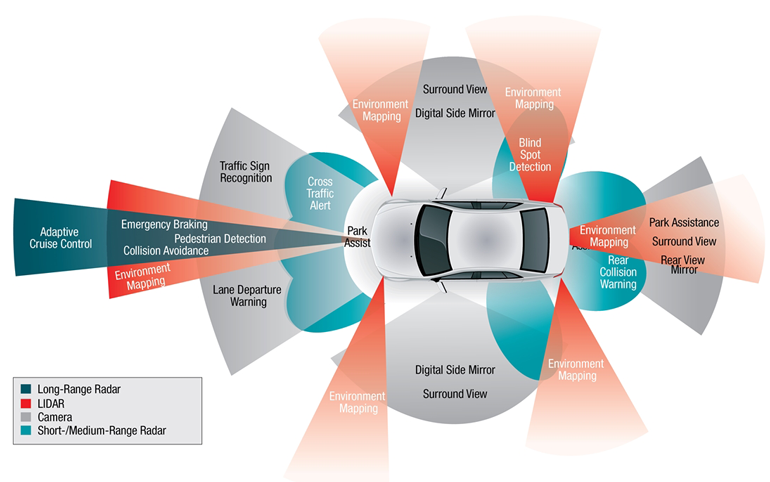Autonomous Vehicles and Machine Learning
Imagine a world where vehicles navigate city streets and highways without human intervention, passengers relaxed, and traffic accidents nearly eliminated. This futuristic vision is becoming a reality thanks to the marriage of machine learning and autonomous vehicles. Have a peek into the fascinating world of self-driving cars, the critical role that machine learning plays in their development, and the extraordinary implications for the future of transportation.
The Evolution of Autonomous Vehicles
Self-driving cars have come a long way since the concept first surfaced. Today, they represent a groundbreaking convergence of automotive engineering and artificial intelligence, particularly machine learning. These vehicles rely on a combination of sensors, cameras, lidar, radar, and advanced algorithms to navigate the complex and dynamic world of the open road.
Machine Learning and Autonomous Vehicles: A Perfect Match
Machine learning is the driving force behind autonomous vehicles’ ability to sense, interpret, and react to their environment. It empowers these vehicles to make informed decisions in real time, leading to safer, more efficient, and sustainable transportation. Here’s how machine learning is shaping the future of autonomous vehicles:
1. Perception and Sensing
Machine learning algorithms process data from an array of sensors and cameras, recognizing objects, pedestrians, road signs, and other vehicles. They learn from past experiences to improve their ability to identify and respond to different situations.
2. Localization and Mapping
To determine their position and orientation, autonomous vehicles rely on localization and mapping techniques. Machine learning algorithms fuse data from GPS, inertial sensors, and visual odometry to create high-definition maps and enhance navigation accuracy.
3. Path Planning and Decision-Making
Machine learning helps autonomous vehicles make complex decisions in real time. They analyze data from sensors and predict possible scenarios to select the safest and most efficient path. These algorithms adapt to changing conditions and learn from past journeys.
4. Vehicle Control and Actuation
Machine learning is applied to vehicle control systems, optimizing acceleration, braking, and steering to ensure a smooth and safe ride. These algorithms can adjust to specific driving styles and road conditions.
5. Overcoming Weather Challenges
Adverse weather conditions like rain, snow, and fog present unique challenges to autonomous vehicles. Machine learning is being used to develop robust algorithms that enhance perception and navigation in unfavorable weather.
The Road to Safer Roads
One of the most compelling promises of autonomous vehicles is their potential to significantly reduce accidents caused by human error. The World Health Organization reports that road traffic accidents are a leading cause of death globally. Machine learning-equipped self-driving cars have the potential to make roads safer by eliminating common human errors, such as distracted driving, speeding, and impaired driving.
Data: The Lifeblood of Autonomous Vehicles
To understand the world and make informed decisions, autonomous vehicles rely on vast amounts of data. Machine learning models require extensive training data to perform effectively. With the help of machine learning, they can:
- Learn from Experience: Autonomous vehicles gather data from each journey and use it to improve their performance. Every turn, stop, and interaction contributes to their knowledge.
- Predict and Adapt: Machine learning models predict potential issues on the road and adapt to new situations. They can anticipate the behavior of other drivers and pedestrians and respond accordingly.
- Update in Real Time: Self-driving cars can receive over-the-air updates to improve their machine learning models. These updates may include enhanced object recognition, improved safety measures, and more.
Challenges and Concerns
As promising as machine learning in autonomous vehicles is, it is not without its challenges and concerns. Some of the key areas of focus include:
- Safety and Reliability: Ensuring that machine learning models are reliable and can handle unexpected situations is paramount. Testing and validation processes are crucial.
- Data Privacy: Autonomous vehicles collect a vast amount of data, raising concerns about data privacy and security. Clear guidelines and policies are needed.
- Regulation and Policy: Governments and regulatory bodies worldwide are working on policies and regulations to ensure the safety and responsible development of autonomous vehicles.
- Ethical Decisions: Autonomous vehicles may face ethical dilemmas, such as deciding how to prioritize the safety of occupants versus pedestrians. Machine learning algorithms must align with societal values.
The Future of Autonomous Transportation
The future of autonomous transportation is brimming with exciting possibilities:
- Reduced Traffic Congestion: Autonomous vehicles can communicate with each other and traffic infrastructure, optimizing traffic flow and reducing congestion.
- Environmental Benefits: By improving driving efficiency and optimizing routes, autonomous vehicles have the potential to reduce fuel consumption and emissions.
- Increased Accessibility: Self-driving cars can offer mobility solutions for individuals who cannot drive due to age or disabilities, enhancing accessibility for all.
- New Business Models: Autonomous ride-sharing services and subscription-based models could revolutionize the automotive industry.
- Beyond Roadways: Autonomous vehicles are not limited to roads. They could be used in agriculture, mining, and public transportation.
The Way Forward
The journey toward fully autonomous vehicles is ongoing. As machine learning continues to advance and regulatory frameworks mature, the future of self-driving cars is becoming increasingly tangible. To ensure a successful and ethical transition to an autonomous future, several key principles should guide our path:
- Safety First: Safety must always be the top priority. Machine learning algorithms should be rigorously tested and validated to ensure that autonomous vehicles are safer than human drivers.
- Ethical Decisions: Engineers and developers must address ethical questions related to autonomous vehicles, striving to make decisions that align with societal values.
- Data Responsibility: Robust data governance and privacy measures are critical. Data collection and storage should be secure and comply with privacy regulations.
- Collaboration: The development of autonomous vehicles is a collaborative effort involving automotive manufacturers, tech companies, regulatory bodies, and policymakers.
- Public Awareness: Educating the public about the capabilities and limitations of autonomous vehicles is essential. An informed public can contribute to the responsible adoption of this technology.
Final Thoughts
Machine learning and autonomous vehicles are steering us into an exciting future where transportation is safer, more efficient, and accessible to all. While there are challenges to overcome, the potential benefits are enormous. The road to autonomous vehicles is one of progress, innovation, and transformation, offering a glimpse into a future where vehicles drive themselves, and the world drives forward.



